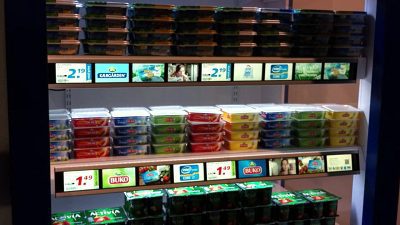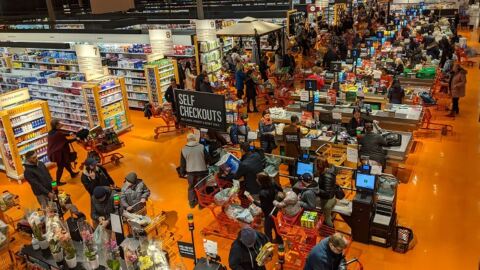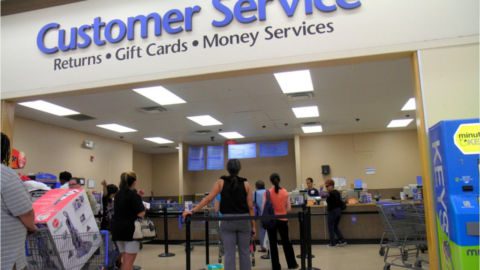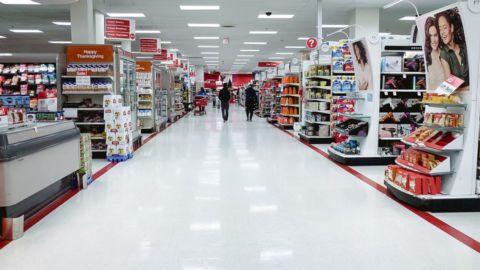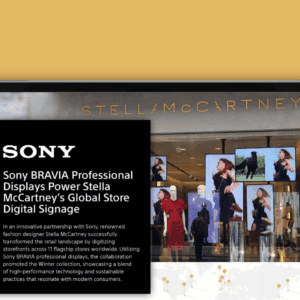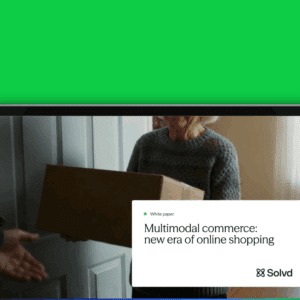Supermarket retailers have long been frustrated by the challenge of providing relevant information at a shopper’s point of decision — in the store aisle. Static signage and product labels share limited data, and they lack the personalization capabilities that have become so important in today’s shopper journey.
But smart shelf solutions appear to be a remedy for these woes — at least on the surface. The technology uses a combination of sensors and digital displays to provide detailed product information, marketing and cross-selling suggestions, and they also can give retailers invaluable insights into customer preferences and shopping patterns.
Smart shelves got two high-profile boosts recently: Hannaford announced a pilot of smart shelf technology at a redesigned concept store, and Kroger, which already is using its own version of the technology, revealed that it was partnering with Microsoft for pilots in two “connected” stores.
The RetailWire BrainTrust recently debated whether smart shelves offer real benefits to shoppers who are already carrying their own information devices, a.k.a. smartphones. They also discussed what retailers can do to make their smart shelves produce a measurable ROI while also maximizing their user-friendliness. Excerpts of the discussion follow:
Ken Morris, Principal, Boston Retail Partners
For products that are complex or those that commonly call for customers to read their package labels, the smart shelf/touchscreen technology will be helpful. A good example is for medicine, which notoriously has print on packages that is too small to read. This technology won’t be needed for basic items like produce, meats, dairy and other staples like flour, sugar, etc., as consumers don’t need more details on these products. The pricing opportunity may be the biggest benefit to both customers and retailers, as individualized pricing and promotions will drive both acceptance and sales. The key will to be to focus the technology on the most relevant products and make sure it is easy and works flawlessly. Test, test and test.
Dave Bruno, Marketing Director, Aptos
Without question, as screen fatigue continues to expand, smart shelf technology will be popular with shoppers. As crazy as it may seem, screen fatigue is a real thing. If you don’t believe me, just ask Alexa. The more we can eliminate the need for people to open their phones, download apps, scan codes, etc., the higher the potential for engagement. The question (and ongoing, evolving challenge) for Hannaford will be whether the content the retailer is presenting at the shelf significantly impacts conversions.
Ron Margulis, Managing Director, RAM Communications
Smart shelves are still a technology looking for an industry challenge to address. It is too expensive to be an effective productivity tool. Payback of a typical system would be more than 10 years. And attempts to pass off the costs to manufacturers have failed because smart shelves simply haven’t proven to deliver nearly the same impact on consumer behavior as other marketing tools. The bottom line is that whenever smart shelves have gained some publicity, due to either advances in the technology or greater concentration on the issues the technology is trying to address, other applications have been deemed more critical and justifiably received the resources.
Joel Rubinson, President, Rubinson Partners Inc.
OK, I don’t get it. The number one problem is finding the product you are looking for and I don’t see how this helps that problem (although technology could be designed to address THAT purpose). Another screen for information is not needed — did they ever hear of smartphones?
Bob Amster, Principal, Retail Technology Group
While there are many benefits to be derived, the most important would be delivering meaningful product information to the shopper, including pricing. This, however, requires high coordination with the product manufacturers so that a high standard of “meaningful” can be maintained. There is also an opportunity to cross-sell by suggesting ancillary products and even suggesting recipes.
Zel Bianco, President and CEO, Interactive Edge
Providing the right content and the appropriate amount of content will be key if this is to be successful. My concern is, will it be too much to navigate [in terms of] the information being displayed, when most people want to make the trip as quickly as possible? And will this technology make the aisles even more cluttered with shoppers and carts standing around while they read?
Jennifer McDermott, Consumer Advocate, finder.com
Smart shelves are long overdue. I would like to see how adopters will use intelligence gained from what people are picking up and purchasing, or discarding before checkout, to cross-sell, while addressing consumer concerns around privacy from data capture/personalized targeting.
Ananda Chakravarty, Retail Thought Leader, Oracle
There are multiple parts to the smart shelf — both the sensor where it can be used for determining who picked what and the display where it’s an extension of digital signage. The latter has been a constant and is growing slowly and in places where digital signage is economical, such as QSR menus. The former is more powerful as an internal tool for the retailer to determine what customers are actually doing in the store. Are they picking up items and putting them back? Are they purchasing? How long do they need to review something to make a decision? Hannaford’s test is a good move in better understanding its customer and customer habits, but the tech isn’t designed for driving significant value yet. We’ll see a combination of these tech tools with things like dynamic pricing in the future store. The ROI for smart shelves is a bit further out, except maybe in POP displays or centralization of in-store marketing, with limited screens and scale.



